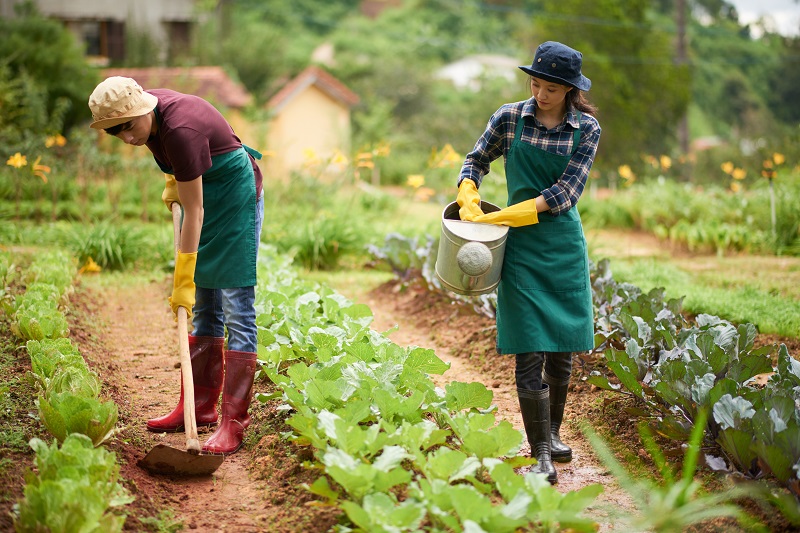
Biopesticides vs. Chemical Pesticides: Which Is Better?
Biopesticides vs. Chemical Pesticides: Which Is Better?
Pest control has been a critical aspect of agriculture for centuries, ensuring crop protection and food security. Traditionally, chemical pesticides have dominated the industry due to their effectiveness in eradicating pests. However, with growing environmental concerns and a push for sustainable farming, biopesticides have emerged as a viable alternative. The question remains: Which is better? Let’s dive into the comparison.
Understanding Chemical Pesticides
Chemical pesticides are synthetically manufactured compounds designed to eliminate pests. They are widely used due to their quick action and broad-spectrum effects.
Types of Chemical Pesticides:
- Insecticides: Target insects that damage crops (e.g., organophosphates, pyrethroids).
- Herbicides: Control weed growth (e.g., glyphosate, atrazine).
- Fungicides: Prevent fungal infections (e.g., chlorothalonil, mancozeb).
- Rodenticides: Manage rodent populations in farms.
Pros of Chemical Pesticides:
- Highly Effective: Fast-acting and provide reliable pest control.
- Broad-Spectrum Application: Can target multiple pests simultaneously.
- Long Shelf Life: Easily stored and transported for long-term use.
- Increased Crop Yield: Reduces losses due to pest infestations.
Cons of Chemical Pesticides:
- Environmental Pollution: Residues can contaminate soil, water, and air.
- Harm to Non-Target Species: Bees, birds, and beneficial insects can be affected.
- Health Risks: Prolonged exposure may lead to health problems in humans and animals.
- Pesticide Resistance: Pests can develop resistance over time, requiring stronger chemicals.
Understanding Biopesticides
Biopesticides are derived from natural materials, such as bacteria, fungi, plants, or minerals. They offer an eco-friendly alternative to traditional chemical pesticides.
Types of Biopesticides:
- Microbial Biopesticides: Contain microorganisms like Bacillus thuringiensis (Bt) that target specific pests.
- Botanical Biopesticides: Plant-based compounds, such as neem oil and pyrethrin.
- Biochemical Biopesticides: Naturally occurring substances like pheromones that disrupt pest mating.
- RNAi-Based Biopesticides: Use RNA interference to silence essential pest genes.
Pros of Biopesticides:
- Environmentally Friendly: Biodegradable and leave minimal residues.
- Target-Specific: Affect only intended pests, sparing beneficial organisms.
- Reduced Health Risks: Less toxic to humans, animals, and pollinators.
- Lower Resistance Development: Pests are less likely to develop resistance compared to synthetic chemicals.
Cons of Biopesticides:
- Slower Action: May take longer to control pests compared to chemical pesticides.
- Shorter Shelf Life: Require careful storage and may degrade faster.
- Variable Effectiveness: Depend on environmental conditions like temperature and humidity.
- Higher Initial Cost: Can be more expensive due to limited large-scale production.
Biopesticides vs. Chemical Pesticides: A Comparative Analysis
| Feature | Biopesticides | Chemical Pesticides |
|---|---|---|
| Effectiveness | Slower, but sustainable | Quick, but can cause resistance |
| Target Specificity | Targets specific pests | Broad-spectrum, may harm beneficial insects |
| Environmental Impact | Eco-friendly, biodegradable | Can cause pollution and toxicity |
| Human Health Impact | Low toxicity | Potential health risks with prolonged exposure |
| Cost Efficiency | Higher initial cost, but sustainable long-term | Cheaper upfront but costly resistance management |
| Resistance Development | Lower risk | High risk due to overuse |
Which Is Better?
The choice between biopesticides and chemical pesticides depends on multiple factors, including crop type, pest pressure, environmental impact, and long-term sustainability. Here’s a breakdown:
- For large-scale, fast-acting pest control, chemical pesticides may be preferred due to their efficiency.
- For organic and sustainable farming, biopesticides offer a safer and more environmentally friendly solution.
- Integrated Pest Management (IPM) approaches often use a combination of both, leveraging the strengths of each type.
Conclusion
Both biopesticides and chemical pesticides play crucial roles in modern agriculture. While chemical pesticides offer quick results, they come with environmental and health concerns. Biopesticides, though slower, provide a sustainable and safer alternative. The best approach often involves a balanced integration of both, ensuring effective pest control while minimizing negative impacts.
What’s Your Take?
Do you think biopesticides will eventually replace chemical pesticides? Or is a hybrid approach the way forward? Share your thoughts in the comments below!













